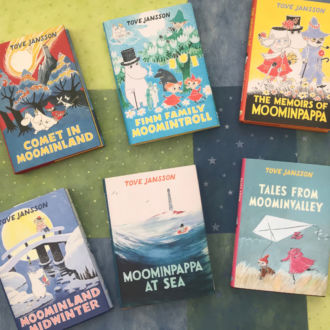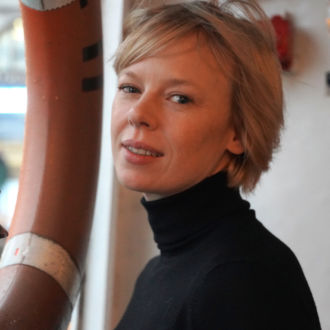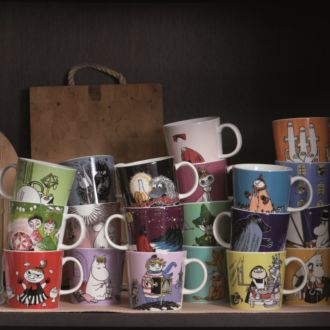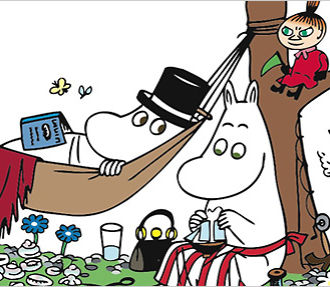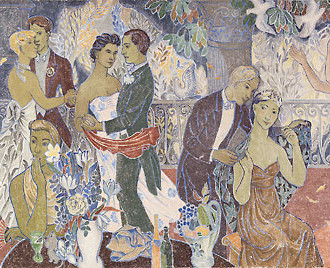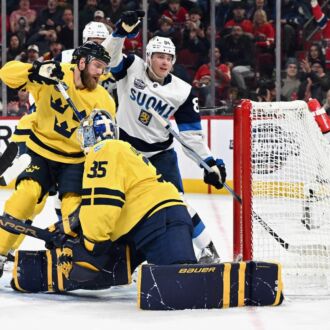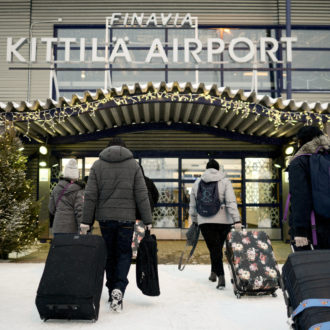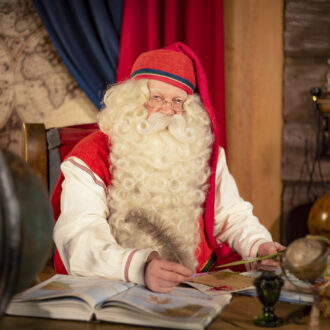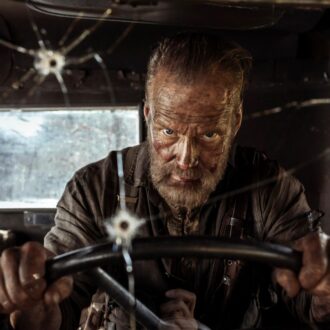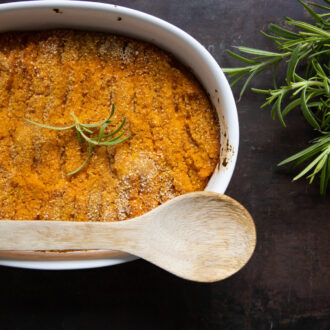The islet of Klovharun lies on the outer edge of the Pellinge Archipelago, roughly 30 kilometres (19 miles) off the coast of Porvoo, a picturesque town in southern Finland.
It is similar to many other islands in the area, but for the fact that it used to serve as a summer hideaway for Tove Jansson (1914–2001), who wrote and illustrated the world-famous Moomin stories. She penned them in Swedish, one of Finland’s official languages; the first book was published in 1945.
Starting in 1964, Jansson and her life partner, graphic artist Tuulikki Pietilä (1917–2009), spent their summers on Klovharun, living in a simple cottage with no electricity or running water, enjoying the solitude and working on their art.
As they grew older, the bare-bones conditions on the island eventually became too difficult for them. They spent their last summer there in 1991, after which Jansson donated the cottage to Pellinge Hembygdsförening, a local heritage association.
The association decided to rent out the island as an artist residence during the summer months. Because of the challenging conditions, residencies last only a week. Over the years, hundreds of artists from Finland and abroad have sought inspiration on Klovharun.
The more barren, the better
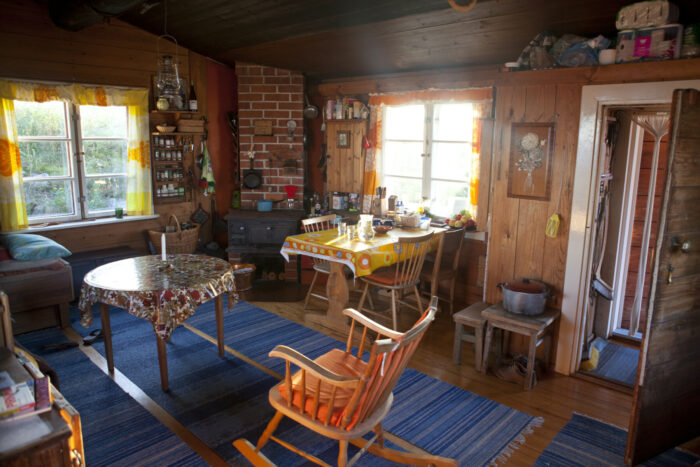
The furnishings on Klovharun are simple but cosy. (Click arrows or swipe for more photos.) Photo: Stefan Bremer
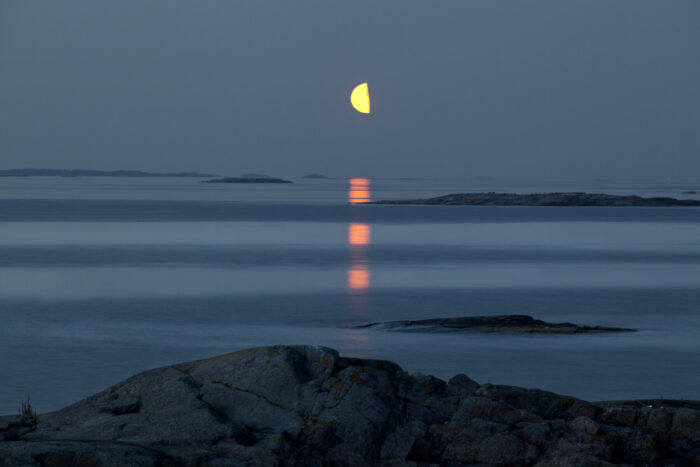
The moon hangs over the archipelago in this view from the shore of Klovharun. Photo: Stefan Bremer
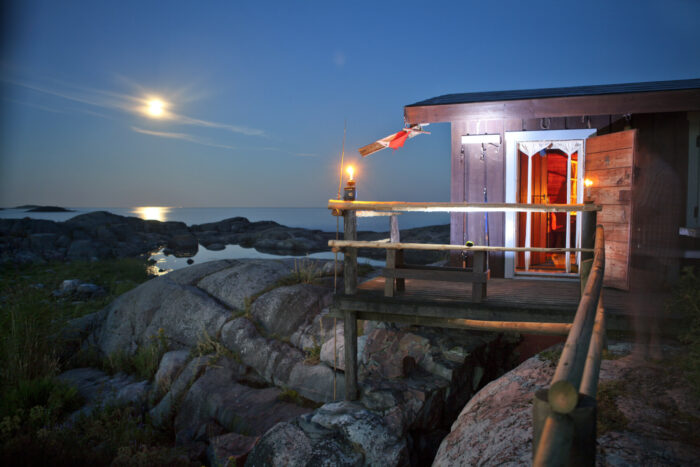
A lone cloud refracts a full moon outside the Klovharun cottage. Photo: Stefan Bremer
Photographer Stefan Bremer and his wife, visual artist Sophia Ehrnrooth, spent a week on Klovharun in July 2013.
Like many Finns, Bremer grew up with the Moomin stories. He later read all of Tove Jansson’s books.
“On Klovharun,” says Bremer, “I appreciated the fact that while she worked in this very confined place, imagination expands the world in her books. It was a magical place.”
Bremer took plenty of photos on Klovharun. Helsinki’s Ateneum Art Museum, part of the Finnish National Gallery, exhibited a selection of them in 2014.
“I’ve always been fascinated by the archipelago – the more barren, the better,” he says. “For a photographer, it was wonderful to experience the purity of the elements out there.”
Observing the birds
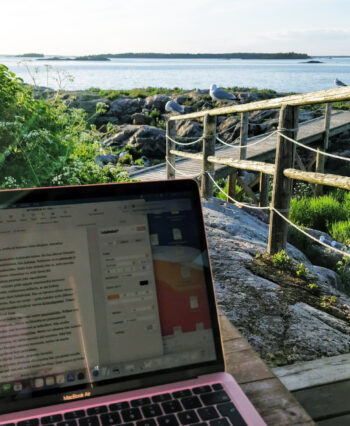
Finnish author Johanna Venho came to Klovharun to put the finishing touches on a fictional account of Tove Jansson’s last days on the island.Photo: Johanna Venho
For author Johanna Venho, Tove Jansson holds special status: In 2021, Venho published Syyskirja (Autumn Book), a fictional account of Jansson’s last days on Klovharun. The title echoes that of Jansson’s Summer Book, which is not a Moomin adventure but a volume aimed at adult readers.
Venho visited the island in June 2021 when she was finalising her novel. “I presumed that by going to Klovharun I would get to add some details and moods to the book,” she says. “However, as soon as I stepped onto the island, I realised I would still be making major changes.”
Early summer is nesting time for many birds in the archipelago. Venho felt she was an intruder among the numerous seagulls, terns and geese that had made Klovharun their home. A visit to the outhouse would mean becoming the target of threatening swoops by an angry goose.
“The seagull chicks hatched that week, and I observed them learning to walk on the rocks,” says Venho.
Ultimate freedom, outside of time
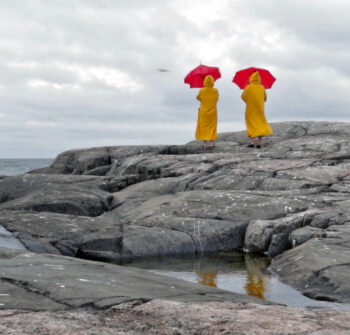
Swedish artists Ida-Lovisa Rudolfsson and Julia Boström lived without phones or watches while on Klovharun, attaining “ultimate freedom.”Photo courtesy of the interview subjects
Swedish textile artist Ida-Lovisa Rudolfsson and multidisciplinary artist Julia Boström visited Klovharun in June 2024. They had decided that they wanted to experience “being outside of time,” as they put it.
“We turned off our phones and had no watches,” says Rudolfsson. “We worked as long as we wanted, ate when we were hungry, swam when we were warm and fell asleep when we were tired. It was ultimate freedom.”
Although the island and the cottage are very small, Rudolfsson felt that they had everything they needed.
Boström says that every evening after the sauna, she read aloud from The Summer Book, “a book that must be read every summer to remind yourself that you are really alive.”
The pleasures of the simple life
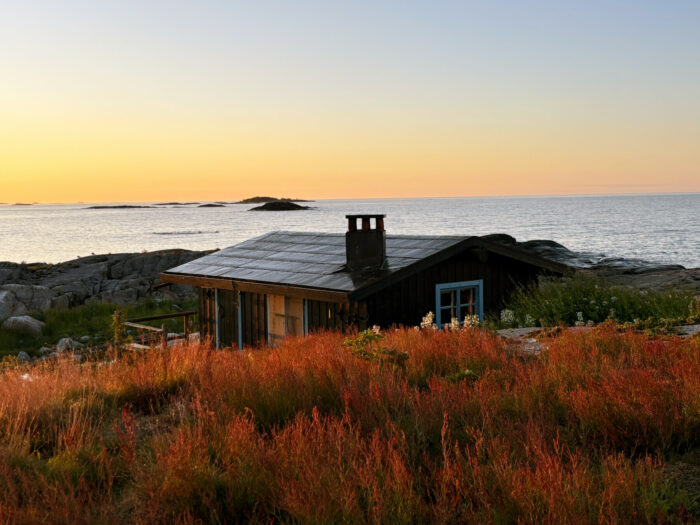
Hungarian dramaturge Katalin Trencsényi filled several notebooks with insights during her stay on Klovharun.Photo: Katalin Trencsényi
Hungarian-born dramaturge Katalin Trencsényi, who lives in London, went to Klovharun in July 2024. She had become familiar with Jansson a few years earlier, when she began work as a part-time lecturer at the University of the Arts Helsinki.
“The more I learnt about Tove Jansson’s work and life, the more I felt that my values and interests were aligned with hers,” says Trencsényi. “Slowly, the discovery grew into a desire to turn this dialogue with Jansson’s work on nature into a new artwork of mine.”
Trencsényi came back from Klovharun carrying “five notebooks brimming with writings and observations.” She is now working on her first novel, titled Palimpsest on Haru, inspired by her experiences on the island.
“During my stay,” she says, “it daunted me how wastefully we live in the city, how little energy and water can be sufficient, and how much pleasure this simple way of living can provide.”
By Juha Mäkinen, February 2025
